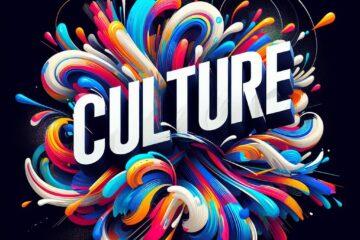Cultural shift refers to a significant change in the attitudes, beliefs, and behaviors of a society or a group of people. It is a process that challenges the existing norms and values and seeks to create a more inclusive and accepting society. In today’s rapidly changing world, cultural shift has become more important than ever. With globalization and increased interconnectedness, societies are becoming more diverse, and it is crucial to adapt to these changes in order to foster understanding and acceptance.
The need for change in cultural attitudes and behaviors is evident in the face of various social issues such as racism, sexism, homophobia, and xenophobia. These issues stem from deeply ingrained biases and prejudices that have been perpetuated by generations. Cultural shift aims to challenge these biases and create a more equitable and inclusive society. It requires individuals to examine their own beliefs and behaviors, and actively work towards dismantling systems of oppression.
Key Takeaways
- Understanding the need for cultural shift is crucial for creating a more tolerant and accepting world.
- Diversity and inclusion play a vital role in cultural shifts, breaking down barriers and redefining boundaries.
- Cultural shift has a significant impact on workplace dynamics, creating a more inclusive and productive environment.
- Education is essential in promoting cultural shift and creating a more informed society.
- Cultural shift celebrates diversity and creativity in the arts, connecting people across borders and challenging prejudice and discrimination in politics.
The Role of Diversity and Inclusion in Cultural Shift
Diversity refers to the presence of different cultures, ethnicities, religions, genders, sexual orientations, abilities, and socioeconomic backgrounds within a society or an organization. Inclusion, on the other hand, refers to creating an environment where all individuals feel valued, respected, and included regardless of their differences. Both diversity and inclusion play a crucial role in cultural shifts.
Diversity and inclusion are important in cultural shifts because they promote cultural understanding and acceptance. When individuals from different backgrounds come together, they bring with them unique perspectives, experiences, and knowledge. This diversity of thought can lead to innovative solutions to complex problems. Moreover, when individuals feel included and valued for who they are, they are more likely to contribute their best work and feel a sense of belonging.
Breaking Down Barriers: How Cultural Shift is Redefining Boundaries
Cultural shift has the power to break down barriers that divide people and create a more inclusive and accepting society. It challenges the notion of “us” versus “them” and encourages individuals to see beyond their own cultural boundaries. By promoting cultural understanding and acceptance, cultural shift can bridge the gaps between different communities and foster a sense of unity.
There are numerous examples of cultural shifts breaking down barriers. One such example is the LGBTQ+ rights movement, which has fought for equal rights and acceptance for individuals regardless of their sexual orientation or gender identity. Through advocacy, education, and visibility, this movement has challenged societal norms and prejudices, leading to greater acceptance and legal protections for LGBTQ+ individuals.
Breaking down barriers is important for a more accepting society because it allows individuals to connect with one another on a deeper level. When people are able to see beyond their differences and recognize the shared humanity in others, it becomes easier to empathize and build meaningful relationships. This sense of connection can lead to greater social cohesion and harmony.
The Impact of Cultural Shift on Workplace Dynamics
| Diversity | The range of differences among people in a workplace, including but not limited to race, ethnicity, gender, age, religion, and sexual orientation. | Increased diversity can lead to more creativity, innovation, and better problem-solving. However, it can also lead to conflicts and misunderstandings if not managed properly. |
| Inclusion | The act of creating a work environment where all employees feel valued, respected, and supported. | Inclusion can improve employee morale, engagement, and productivity. It can also reduce turnover and absenteeism. However, it requires a commitment from leadership and a willingness to address biases and barriers. |
| Cultural Competence | The ability to understand, appreciate, and effectively work with people from different cultures. | Cultural competence can improve communication, collaboration, and teamwork. It can also reduce misunderstandings and conflicts. However, it requires education, training, and ongoing practice. |
| Work-Life Balance | The ability to balance work and personal responsibilities, including family, health, and leisure activities. | Work-life balance can improve employee satisfaction, well-being, and retention. It can also reduce stress and burnout. However, it requires flexible policies and a supportive culture. |
| Remote Work | The ability to work from a location outside of the traditional office, using technology to stay connected. | Remote work can improve employee flexibility, autonomy, and work-life balance. It can also reduce commuting time and costs. However, it requires clear expectations, communication, and trust. |
Cultural shift has a significant impact on workplace dynamics, particularly in terms of diversity and inclusion. As organizations become more diverse, it is important for them to create an inclusive environment where all employees feel valued and respected. This not only leads to better employee satisfaction but also improves productivity and innovation.
A diverse workplace brings together individuals with different backgrounds, perspectives, and skills. This diversity of thought can lead to more creative problem-solving and decision-making. When employees feel included and valued for who they are, they are more likely to contribute their best work and collaborate effectively with others.
Cultural shifts can improve workplace dynamics by challenging biases and stereotypes that may exist within an organization. It encourages individuals to examine their own beliefs and behaviors and promotes a culture of respect and acceptance. This can lead to a more positive work environment where everyone feels comfortable being themselves.
Education and Cultural Shift: Creating a More Informed Society
Education plays a crucial role in promoting cultural shift and creating a more informed society. By teaching cultural awareness and acceptance in schools, we can equip future generations with the knowledge and skills needed to navigate a diverse world.
Schools can teach students about different cultures, religions, and perspectives, helping them develop empathy and understanding. This can help break down stereotypes and prejudices that may exist among young people. Moreover, by promoting inclusivity and respect in the classroom, schools can create a safe and supportive environment for all students.
In addition to formal education, informal education through media and popular culture also plays a role in cultural shift. By promoting diverse narratives and representation, media can challenge stereotypes and promote acceptance. This can help individuals develop a more nuanced understanding of different cultures and foster empathy.
Cultural Shift and the Arts: Celebrating Diversity and Creativity
The arts have always played a significant role in promoting cultural shifts. Through various forms of artistic expression such as music, dance, theater, literature, and visual arts, the arts celebrate diversity and creativity.
The arts provide a platform for marginalized voices to be heard and represented. They challenge dominant narratives and offer alternative perspectives. By showcasing the richness of different cultures, the arts promote cultural understanding and acceptance.
For example, music has the power to transcend language barriers and bring people together. It can celebrate diverse musical traditions from around the world and create a sense of unity. Similarly, visual arts can challenge societal norms and stereotypes by presenting alternative representations of beauty and identity.

The Role of Technology in Cultural Shift: Connecting People Across Borders
Technology has had a profound impact on cultural shifts by connecting people across borders and promoting cultural understanding. With the advent of the internet and social media, individuals from different parts of the world can now connect with one another instantly.
Technology allows for the exchange of ideas, information, and experiences on a global scale. It provides a platform for marginalized voices to be heard and for diverse perspectives to be shared. This can challenge existing power structures and promote a more inclusive and equitable society.
Moreover, technology can facilitate cross-cultural collaborations and partnerships. Through virtual meetings and online platforms, individuals from different cultures can work together on projects and initiatives. This can lead to greater cultural understanding and appreciation.
Cultural Shift in Politics: Challenging Prejudice and Discrimination
Cultural shift has had a significant impact on politics by challenging prejudice and discrimination. It has led to the rise of social movements that advocate for equal rights and justice for marginalized communities.
For example, the civil rights movement in the United States challenged racial segregation and discrimination, leading to significant legal and social changes. Similarly, the feminist movement has fought for gender equality and challenged patriarchal norms.
Cultural shift in politics is important because it challenges existing power structures and promotes a more just and equitable society. It encourages individuals to question the status quo and advocate for change. By amplifying marginalized voices, cultural shifts can bring about meaningful policy changes that benefit all members of society.
The Importance of Empathy in Cultural Shift: Building Bridges, Not Walls
Empathy plays a crucial role in promoting cultural shift by helping individuals build bridges between different cultures. Empathy is the ability to understand and share the feelings of others, and it is essential for fostering understanding and acceptance.
By putting oneself in another person’s shoes, individuals can develop a deeper understanding of their experiences, challenges, and perspectives. This can help break down stereotypes and prejudices that may exist. Moreover, empathy allows individuals to connect with one another on a deeper level, fostering meaningful relationships.
Empathy is particularly important in today’s polarized world where divisions between different cultures, religions, and ideologies are becoming increasingly pronounced. By cultivating empathy, individuals can bridge these divides and work towards a more accepting and tolerant world.
The Future of Cultural Shift: Creating a More Tolerant and Accepting World
The potential of cultural shifts to create a more tolerant and accepting world is immense. By challenging biases and prejudices, promoting diversity and inclusion, breaking down barriers, and fostering empathy, cultural shifts can lead to a society where all individuals are valued and respected.
However, achieving a cultural shift is not without its challenges. It requires individuals to examine their own beliefs and behaviors, and actively work towards change. It also requires systemic changes that address the root causes of inequality and discrimination.
Despite these challenges, it is important to continue efforts to promote a cultural shift for a better future. By working together, individuals, communities, organizations, and governments can create a more inclusive and equitable society where diversity is celebrated and everyone has the opportunity to thrive.
If you’re interested in exploring the topic of Cultural Shift further, I highly recommend checking out this insightful article on change management strategies. It delves into the importance of revising and adapting strategies to effectively navigate organizational transformations. This article provides valuable insights and practical tips for successfully managing change within a cultural context. To read more, click here.
FAQs
What is a Cultural Shift?
Cultural Shift refers to a significant change in the values, beliefs, behaviors, and norms of a society or a group of people over time.
What causes Cultural Shift?
Cultural Shifts can be caused by various factors such as technological advancements, globalization, migration, social movements, economic changes, and political events.
What are the effects of Cultural Shift?
The effects of Cultural Shifts can be both positive and negative. It can lead to the emergence of new ideas, innovations, and cultural expressions. However, it can also result in the loss of traditional values, cultural heritage, and social cohesion.
How does Cultural Shift affect society?
Cultural Shifts can have a profound impact on society. It can change the way people think, behave, and interact with each other. It can also influence social institutions such as family, education, religion, and politics.
What are some examples of Cultural Shift?
Examples of Cultural Shifts include the rise of social media, the acceptance of same-sex marriage, the decline of traditional gender roles, and the increasing diversity of cultural expressions in popular media.


